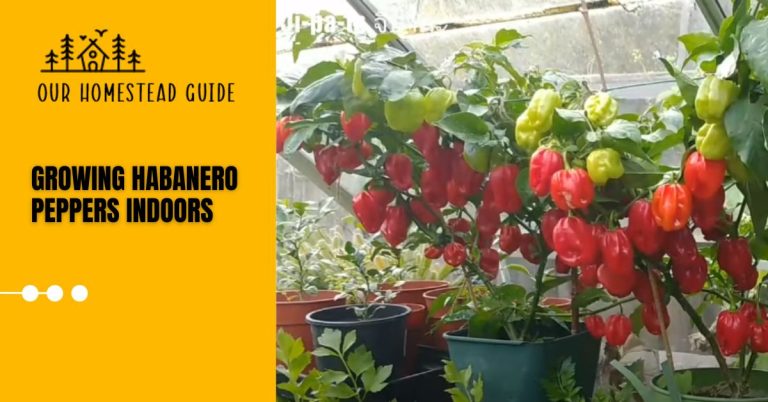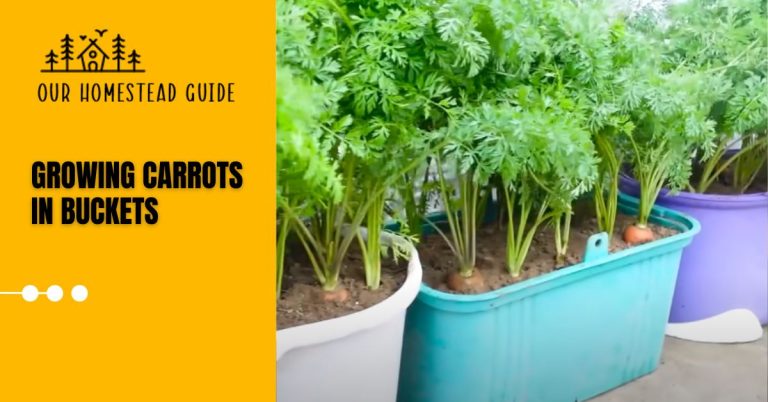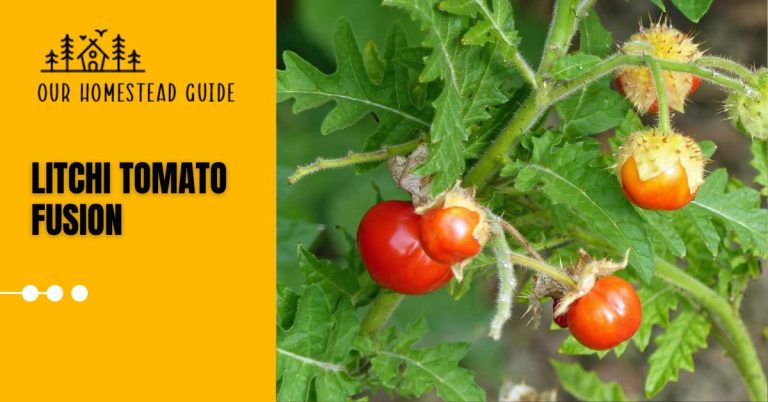Growing Cauliflower in Pots, Care and 13 Tips: step by step guide
Growing cauliflower in pots A flexible and wholesome food that can be grown in your yard or even in containers is cauliflower. You’ll be happy to discover that growing cauliflower in pots is not only doable but also quite rewarding whether you have a small yard or want to try your hand at container gardening.
We will lead you through the procedures, advice, and suggestions for serving cauliflower that has been successfully grown in pots in this in-depth tutorial.
Information Table:
| Topic | Information |
| Container Selection | Choose a large pot or container for ample space. |
| Soil Preparation | Use well-draining potting soil for cauliflower. |
| Planting | Follow seed packet or seedling instructions for spacing. |
| Sunlight and Temperature | Provide at least 6 hours of sunlight and ideal temps. |
| Watering and Fertilizing | Maintain consistent moisture, fertilize as necessary. |
| Pest Control | Regularly inspect for pests; use natural repellents. |
| Harvesting | Harvest cauliflower when the head is firm and white. |
| Serving Ideas | Explore recipes like roasted cauliflower or cauliflower rice. |
| FAQs | Find answers to common questions about pot gardening. |
Growing Cauliflower in Pots:
Instructions
Step 1: Choose the Right Container
- Pick a pot or container that is big enough to hold cauliflower. A 5-gallon container should do the trick, though bigger ones are preferable.
Step 2: Prepare the Potting Mix
- High-quality potting soil should be used to fill the container. Since cauliflower needs soil that drains well, make sure the mixture is loose and organically rich.
Step 3: Add Drainage Holes
- To avoid waterlogging, make sure the container’s bottom has lots of drainage holes. Cauliflower needs good drainage.
Step 4: Compress the Soil
- To make a solid bed, lightly press the earth down. Cauliflower plants want a steady atmosphere when they are planted.
Step 5: Plant Cauliflower Seedlings
- Give the cauliflower seedlings ample room around the sides of the container so that more plants may be planted.
- Each seedling should be planted in a hole that is deep enough to cover the first set of leaves. The plants will benefit from this stability and assistance.
Step 6: Interplant Other Vegetables
- As cauliflower initially doesn’t fill the entire container, think about interplanting other vegetables. In this case, pea plants are positioned on the periphery.
- Be sure to deeply bury the pea seedlings, just like you did with the cauliflower seeds.
Step 7: Add Nutrients
- Since cauliflowers consume a lot of food, add nutrients to the potting mix. To boost critical nutrients, you might add fish meal or bone meal.
Step 8: Provide Support for Pea Plants
- After planting, thoroughly water the container to help the soil settle, support plant stability, and supply vital hydration.
- Keep the soil consistently wet and sufficiently humid during the whole growing season to promote good development.
- Because plants depend on the little area inside the pot, adequate and consistent watering is essential for the success of container gardening.
- Your container plants will thrive if the moisture levels are monitored and adjusted, leading to a satisfying and fruitful garden.
Step 9: Water the Container
- Water the container well to let the dirt settle and to provide the plants moisture. Throughout the growth season, maintain a constant moisture level in the soil.
Step 10: Place the Container Outside
- Place the container in an appropriate outdoor spot so that it can get enough light. For best development, cauliflower needs full light.
Step 11: Monitor and Care
- Vigilantly watch for any signs of pests or diseases on your plants, such as discolored leaves or unusual spots.
- If you spot any issues, promptly take appropriate measures to address them, whether it’s through natural remedies or treatments.
- As your plants grow and flourish, maintain consistent care, providing them with adequate water, nutrients, and sunlight.
- Regular attention and care will ensure a healthy and thriving garden, yielding a bountiful harvest of homegrown vegetables and fruits.
Step 12: Harvest Cauliflower
- Depending on the kind of cauliflower used, cauliflower normally takes 60 to 70 days to achieve maturity.
- Consider choosing smaller cauliflower heads, which are possible in containers owing to space restrictions, to hasten your yield.
- Faster yields from container gardening make it feasible to enjoy organic cauliflower even in confined places.
- Try out many cauliflower cultivars to see which one best matches your container garden and preferred harvest period.
Step 13: Enjoy Your Container Garden
- Continue to take care of your cauliflower and other veggies as they expand, and anticipate collecting your organic product.
Cauliflower Care in Pots:
To guarantee good development and a plentiful crop, caring for cauliflower in pots necessitates paying close attention to a number of crucial aspects. Here is a detailed guide on caring for cauliflower in pots:
Choose the Proper Pot:
Choose a container that is roomy for your cauliflower; ideally, its depth and breadth should be between 12 and 18 inches. This large area guarantees enough room for strong root growth, which is necessary for strong cauliflower plants.
good potting soil
Growing cauliflower in pots Use organically rich, well-draining potting soil. Make sure there is adequate aeration to avoid waterlogging.
Planting:
Use seedlings or sow cauliflower seeds according to the directions on the box. To avoid crowding, plant them at the suggested depth and distance apart.
Sunlight:
A position with at least six hours of direct sunshine each day should be chosen for the pot. While cauliflower can tolerate little shade, it prefers the full sun.
Watering:
Growing cauliflower in pots Always keep the soil wet, but not waterlogged. When the top inch of the soil seems dry, water it. To avoid root rot, make sure the drainage is appropriate.
Fertilization:
To supply the essential nutrients, use a well-balanced, slow-release fertilizer or organic compost. For appropriate fertilization, follow the directions on the box or do soil testing.
Disease and Pest Management:
Check your cauliflower frequently for insects such as aphids, caterpillars, and cabbage worms. Use safe insecticides, helpful insects, or natural therapies as necessary. Keep an eye out for illnesses like rot and powdery mildew and treat quickly if you see any.
Mulching:
Growing cauliflower in pots Mulch should be applied all around the plants to retain moisture, control soil temperature, and inhibit weed development.
Thinning:
If you’ve planted numerous seedlings in the same pot, it’s essential to thin them out for healthy, evenly spaced cauliflower plants. Only the healthiest, sturdiest seedlings should be chosen, and the surplus should be removed. This avoids crowding and nutrient competition by giving each plant enough space to grow and thrive.
Temperature:
The ideal temperature range for cauliflower is between 60°F and 70°F. During the sweltering summer days, provide shade to shield the plants from the intense heat.
Crop Rotation:
Growing cauliflower in pots To prevent soil evaporation and limit the chance of disease accumulation, avoid growing cauliflower in the same container year after year.
Soil Refreshment:
Consider reviving or replacing the potting soil when growing cauliflower in pots at the start of each new growth season. This procedure guarantees that your cauliflower plants have access to vital nutrients for optimum growth and helps preserve the quality of the soil.
Support:
When cultivating cauliflower kinds with enormous heads, make sure the plant has enough support so the cauliflower won’t cause it to topple over. The plant will grow strong and upright thanks to this support.
Notes:
Consider companion planting with herbs like mint or dill to deter pests.
It makes sense to companion plant herbs like mint or dill with cauliflower to ward against pests and encourage a stronger harvest. While dill attracts helpful insects like ladybugs and parasitic wasps, which may help control plant pests, mint’s strong perfume can help repel insects.
This organic method not only improves the biodiversity of your garden but also lessens the need for chemical pesticides, resulting in a more peaceful and environmentally friendly gardening environment.
Regularly check for signs of diseases such as rot or powdery mildew.
In order to maintain a healthy cauliflower crop, vigilance is necessary. Check your plants frequently for any symptoms of ailments like rot or powdery mildew. Early detection of these problems enables rapid intervention and treatment, which can greatly increase the likelihood of a good harvest of cauliflower.
Growing cauliflower in pots The secret to keeping your cauliflower plants healthy and disease-free is regular inspections and prompt responses.
You can grow different cauliflower varieties, including purple and Romanesco, in pots.
In fact, you can grow a variety of cauliflower species in pots or containers, including vibrant ones like purple and romanesco. These small-growing cauliflower cultivars are ideal for container gardening since they provide brilliant color and wonderful tastes to your yard.
Growing cauliflower in pots Just make sure the pot size meets the requirements of the particular variety and adhere to the recommended care procedures to enjoy a varied and abundant crop of cauliflower in your constrained area.
Nutrition:
Every serving of cauliflower contains a variety of important vitamins, minerals, and fiber, making it a nutritious powerhouse. A sample of its remarkable nutritional profile is provided below:
Vitamins: Cauliflower is a good source of vitamins including vitamin C, which supports healthy skin and the immune system, vitamin K, which is necessary for blood clotting and bone health, and many B vitamins, such folate and vitamin B6, which are important for overall wellbeing.
Minerals: Growing cauliflower in pots It has elements like potassium, which is good for the heart, magnesium, which is good for the muscles and nerves, and phosphorus, which is good for the bones.
Fiber: Cauliflower is an excellent source of dietary fiber, which promotes healthy weight maintenance, improves digestion, and regulates blood sugar levels.
Antioxidants: Growing cauliflower in pots It includes antioxidants, such as glucosinolates and isothiocyanates, which have been associated with a lower risk of several malignancies and other chronic illnesses.
Low in Calories: Because cauliflower has few calories, it is a fantastic option for anyone trying to control their weight.
Versatile: It is a versatile vegetable that can be prepared in a number of different ways, making it simple to include in a balanced diet.
13 Super Steps To Grow Cauliflower In A Pot of Serving Ideas:
Cauliflower can be grown in pots, which not only saves space but also gives you more freedom in where and how you eat this healthy food. Here are some suggestions for presenting pot-grown cauliflower:
Cauliflower Rice:
To make cauliflower rice, grate or pulse cauliflower florets in a food processor. Growing cauliflower in pots Use it as a basis for stir-fries and grain-free bowls, or sauté it as a low-carb substitute for regular rice.
Cauliflower that has been roasted:
Toss cauliflower florets with olive oil, salt, pepper, and any other ingredients you choose. For a nice side dish, roast them in the oven until they are crispy and caramelized.
Cauliflower Mash:
Cook cauliflower in a steamer or boiling water until it’s cooked to make a low-carb, creamy substitute for mashed potatoes. For a tasty and healthy side dish, mash the cauliflower and combine it with butter or dairy-free substitutes.
Cauliflower Pizza Crust:
Combine cauliflower rice with an egg, cheese, and herbs to create a gluten-free pizza crust. For a healthy pie, top it with your favorite pizza toppings.
Cauliflower Soup:
Growing cauliflower in pots To make a creamy cauliflower soup, combine steamed or roasted cauliflower with stock, onions, garlic, and spices. Olive oil or fresh herbs can be used as a garnish.
Buffalo Cauliflower Bites:
make crispy cauliflower bites, coat the florets in a hot buffalo sauce and bake. Growing cauliflower in potsFor a mouthwatering starter or snack, serve with a side of ranch or blue cheese dressing.
Cauliflower Steaks:
Cut broad slices from a big head of cauliflower, then bake or grill them to make “steaks.” Serve them as a substantial main meal after liberally seasoning them.
Cauliflower Tacos:
Roasted cauliflower florets make a terrific filler for tacos that are vegetarian or vegan. Growing cauliflower in pots Add salsa, avocado, and any other taco toppings you choose.
Cauliflower and Cheese:
Growing cauliflower in pots Layering cauliflower with a creamy cheese sauce and baking it till bubbling and golden brown creates a cauliflower gratin.
Cauliflower Stir-Fry:
For a fast and wholesome supper, stir-fry cauliflower florets with additional veggies and your preferred protein.
Cauliflower Salad
Cold cauliflower salad may be made by steaming or blanching cauliflower florets, then combining them with additional salad components, a tasty dressing, and fresh herbs.
Cauliflower Snacks:
To make a crispy and healthful snack alternative to chips, bake cauliflower florets with your preferred seasonings.
Curry with cauliflower:
Include cauliflower in your favorite curry dishes for a filling and healthy addition.
Conclusion:
Even if you have a small outdoor space, growing cauliflower in pots is a terrific way to enjoy this healthy food. You may grow great cauliflower on your patio or balcony by following our step-by-step instructions and paying attention to the tips and serving suggestions. Enjoy your garden!
Most Frequently Asked Questions!
Can I grow cauliflower in a pot on my balcony or patio?
As long as it receives enough sunlight, you may grow cauliflower well in pots on a balcony, patio, or any other small outdoor place.
What size of pot is suitable for growing cauliflower?
Select a pot that is at least 12-18 inches deep and 12-18 inches wide to allow ample room for the development of the cauliflower’s roots.
When should I plant cauliflower in pots?
It grows well in the chilly seasons. To prevent intense heat, plant it in early spring or late summer.
How much sunlight does cauliflower in pots need?
Although it can tolerate some shade, cauliflower loves direct sunlight. Aim for six hours or more per day of direct sunshine.
What type of soil is best for growing cauliflower in pots?
Use organically rich, well-draining potting soil. With a pH of about 6.5, cauliflower grows best in slightly acidic to neutral soil.
How often should I water potted cauliflower?
Maintain a constant moisture level in the soil that is not wet. When the top inch of the soil seems dry, water it.
What pests and diseases should I watch out for?
Aphids, caterpillars, and cabbage worms are examples of typical pests. Keep an eye out for leaf spot, powdery mildew, and rot disease symptoms.
Can I grow different cauliflower varieties in the same pot?
In order to avoid overcrowding and resource competition, it is advisable to grow just one cauliflower plant per container.
How do I know when cauliflower is ready to harvest?
When the head is solid, white, and the curds are tightly packed, cauliflower is usually ready for harvest in two to three months.
Can I reuse the potting soil for cauliflower in the next season?
To maintain sufficient nutrients and avoid illnesses that are transmitted via the soil, it is a good idea to renew or replace the potting soil each season.
Should I fertilize potted cauliflower, and if so, how often?
Based on soil testing or the look of the plant, fertilize as necessary. Use a balanced fertilizer and adhere to the directions on the container.
Can I grow cauliflower in pots indoors?
Cauliflower may be grown from seeds indoors and then moved outside, but throughout its whole life cycle, it usually needs more room and sunshine than indoor circumstances can offer.
you may also like this article.



